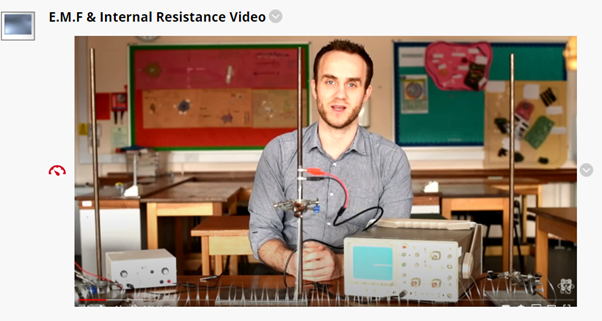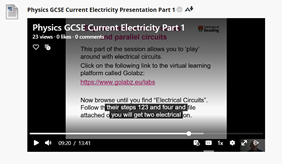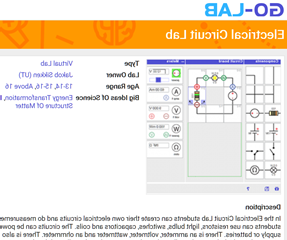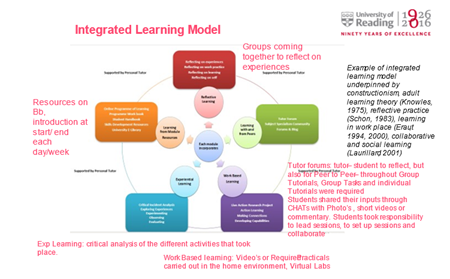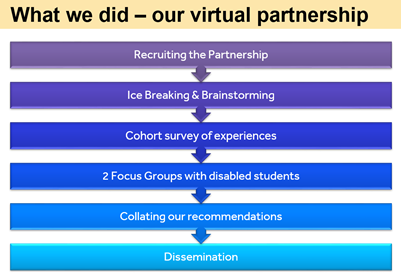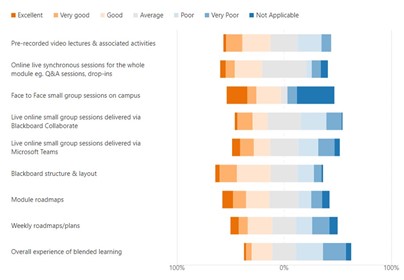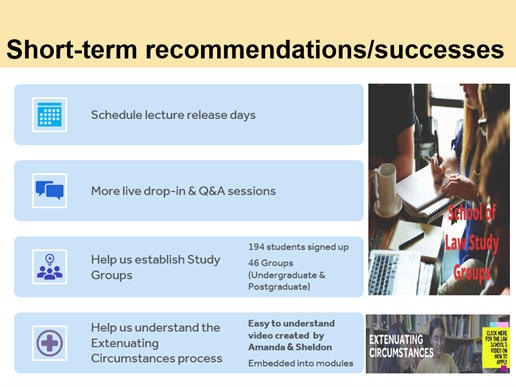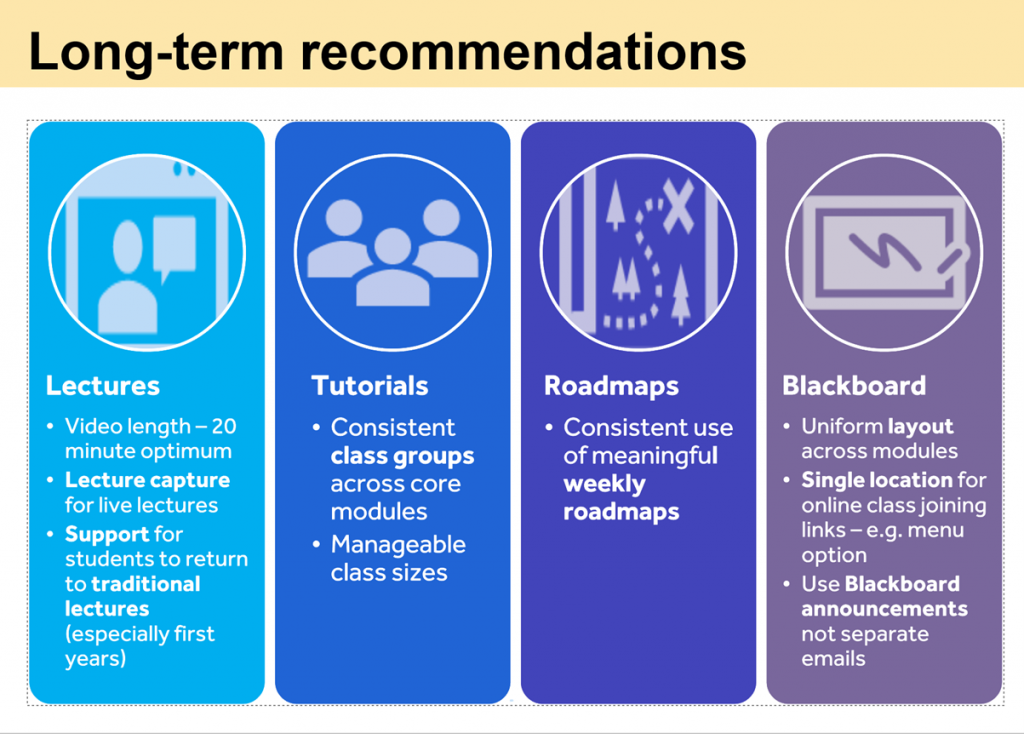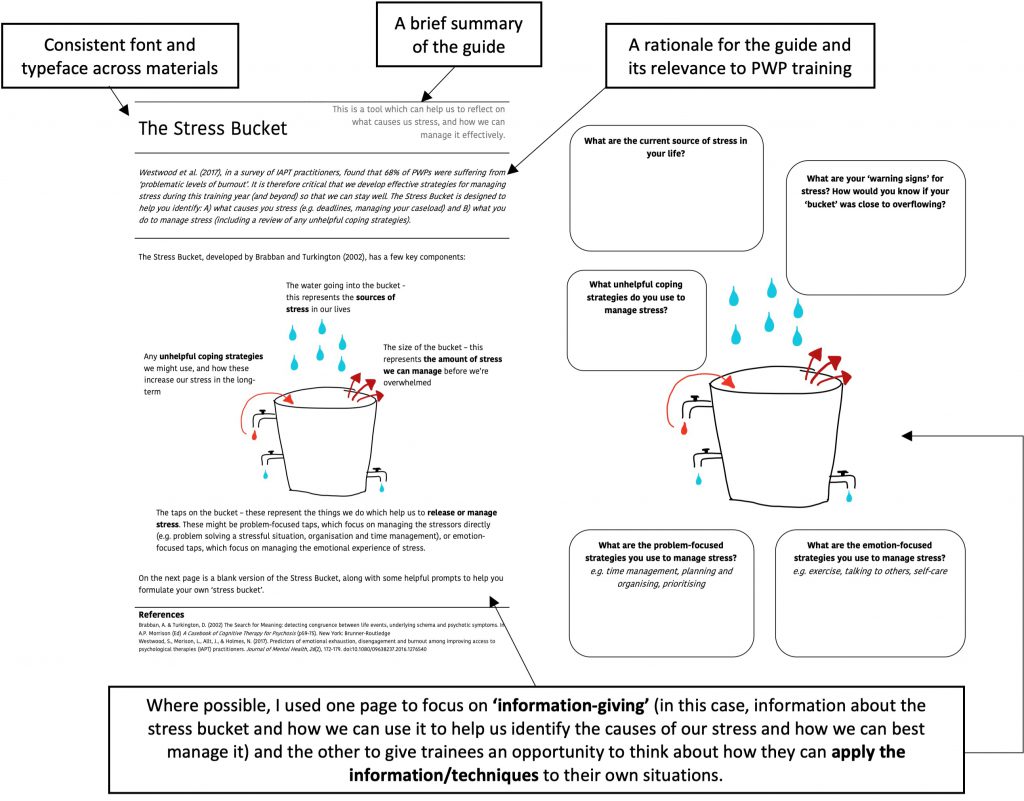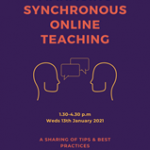Emma-Jayne Conway, James Kachellek and Tamara Wiehe
Overview
Staff and students in CWI collaborated on a project initially designed to merge two timetables of sister programmes to aid cross programme working (objective 1) but gave rise to the perfect opportunity to review the way our PWP curriculum is implemented following the pandemic (objective 2). In this blog, we reflect on achieving both objectives within our original timeframe!
Objectives
1. To create a single timetable to aid cross-programme working for teaching and administrative staff.
2. To review curriculum implementation including structure and modality on a modular and programme level with all key stakeholders.
Context
In response to a departmental restructure, we required more efficient ways of working across programmes starting with a uniform timetable. Early on, the project evolved to also review the structure and modality of the curriculum. Our two sister PWP training programmes (one undergraduate and one postgraduate) are virtually identical with a few exceptions but historically had been managed separately.
Over the course of 2021, we planned, designed, and implemented a timetable merger for our September cohorts. This impacted on 3 modules (4 for undergraduates) that form the PWP training year for the MSci Applied Psychology (Clinical) students and the Postgraduate/graduate Certificate in Evidence-Based Psychological Treatments (IAPT Pathway).
Taking both Higher Education and Mental Health Care processes into consideration was no easy feat, including those specific to University of Reading (e.g., term dates), our national PWP curriculum specifying the content and learning outcomes for our 26 teaching days and 19 study days, and British Psychological Society (BPS) accreditation requirements. Modality was a particularly important topic throughout this project, taking key learnings from remote delivery during the pandemic as well as awaiting guidance from our professional accrediting body.
Overall, it served as an excellent opportunity to work collaboratively with staff and students to review the implementation of PWP training at the University of Reading.
Implementation
- Early 2021: The PWP team met on several occasions to discuss the possibility of merging the two timetables, including transitioning to a “blended” format of online and face-to-face teaching post-Covid. We set out a timeline for planning, designing, and implementing the project.
- Advice was sought from the Director of Training in CWI and colleagues in Academic Development, CQSD based on their experience of timetable mergers and a green light was given based on our draft plans!
- Several options were considered before the final format was arrived at: Face-to-face teaching is weighted towards the first module/term with progressive increase to the online taught content as the course progresses. (Rationale supplied elsewhere in this blog).
- The educator team were able to draw on feedback from online teaching to gauge the attitude of the student body to online learning, as well as expectations and concerns related to a return to the classroom (see Impact, below). The student voice was important in terms of utilising partnership to create meaningful change to curriculum implementation. However, engaging professional practice students via the course reps was a challenge due to time constraints, therefore, we were able to engage graduate instead. This is something we would consider earlier on in future projects.
- The educator team unanimously agreed that the externally taught content of the VEC module could be effectively taught with mixed cohorts from the Core-PWP and MSci cohorts using an online approach.
- Information on the changes was disseminated to Program Administrators to enable efficient implementation. External Educators were made aware of the retention of online lecture sessions, and the mixed-cohort approach, by the VEC module convenor.
- Timetables were updated by the Program Director, in collaboration with Module Convenors; consideration has been given to the potential Workflow impact of closely aligning multiple cohorts (see below). Timetables have been looked at by the team ‘side-by-side,’ to ensure that Workflow balance is maintained for educators across all cohorts. We can continue to monitor the impact on workload while adjustments are made to teaching (such as with the Working Document mentioned in the Follow-Up section, below).
- IAPT Services were made aware of the changes to the timetables
Impact
As of October 2021, the merged timetables are proving effective, with no major barriers, having been detected. Predicted barriers included those to effective teaching of (previously face-to-face) content, student/staff dissatisfaction with a blended approach, and significant administrative/technical difficulties.
Face-to-Face teaching resumed in September 2021 and has been a successful return to the classroom. Educators report being able to switch between live sessions and face-to-face teaching days without significant barriers.
The educator team plan to continue to gather feedback on the student experience of the blended and merged approach. We will be able to assess feedback when the first cohorts fully complete in June 2022.
Feedback will be sought from module convenors, educators, and program administrators using “menti” feedback forms, bi-weekly team meetings and informal qualitative discussion, to gauge the impact of the changes on workflow. Student feedback will also be monitored through end-of-module feedback collated by the School.
Reflection
- The challenge of engaging professional practice students and utilising graduates to overcome this. We will consider setting up graduate/patient advisory group for future projects.
- Using feedback from a MSci graduate led to timetable changes to ensure readability and clarity for students. This included points such as colour coding F2F v online teaching days, explaining acronyms, etc.
- Involving all members of the team (especially Module Convenors) felt like a much more meaningful and collaborative process than Programme Director decisions alone. It gave Module Convenors autonomy over their modules as well as aligning learning outcomes across the 3 modules of the programme which is particularly important for clinical training. Other courses may wish to replicate this approach to build team cohesion and allow all colleagues to make meaningful contributions to programme changes and delivery.
Follow up
- Working document has been created for the educator team to comment on the teaching they have just delivered i.e., was there enough time to deliver all content? This has allowed changes to be made within a matter of weeks as the same day is delivered across the programmes. As a result, we can fine-tune the timetable and delivery of the programme quicky and efficiently to improve the student experience.
- We will review module by module and at the end of each cohort to continue making any necessary adjustments. Module and programme evaluations, student-staff rep meetings and any feedback from individual teaching days will also help to inform this.
